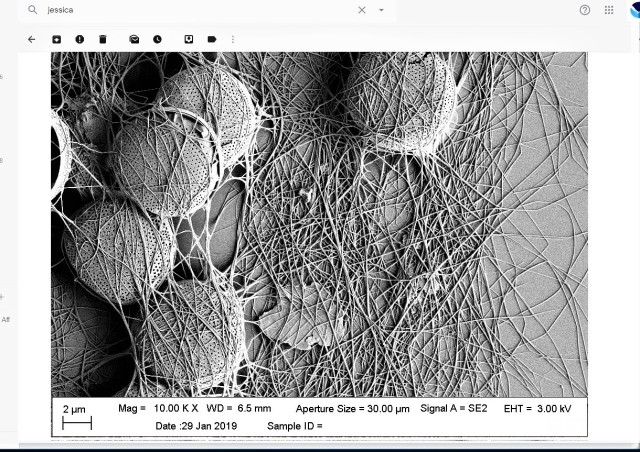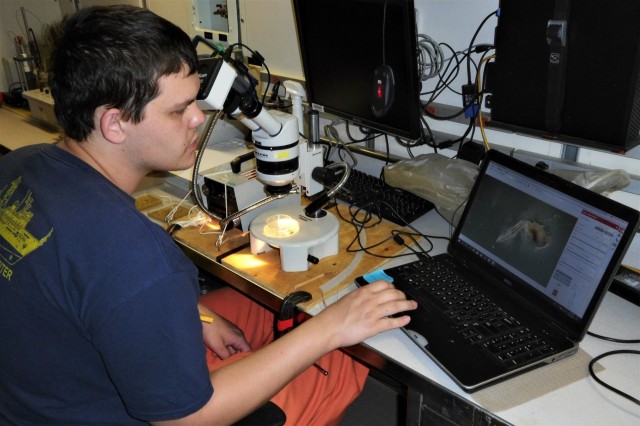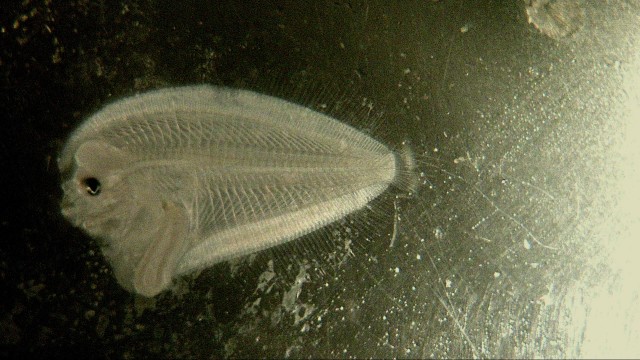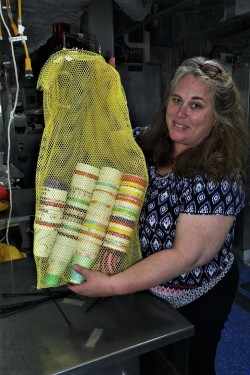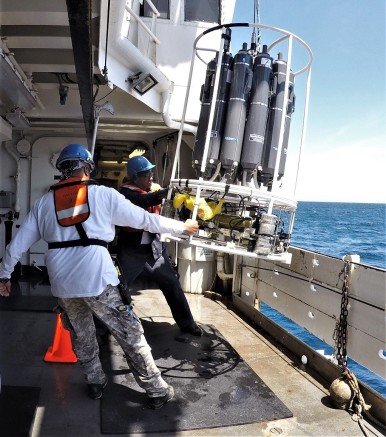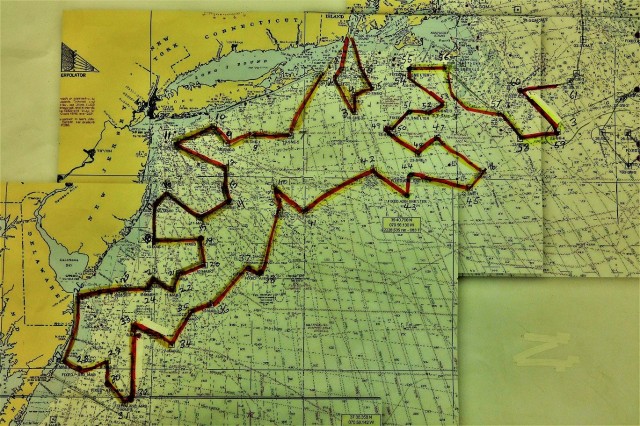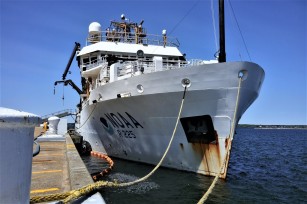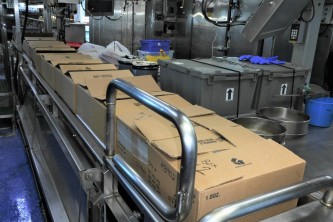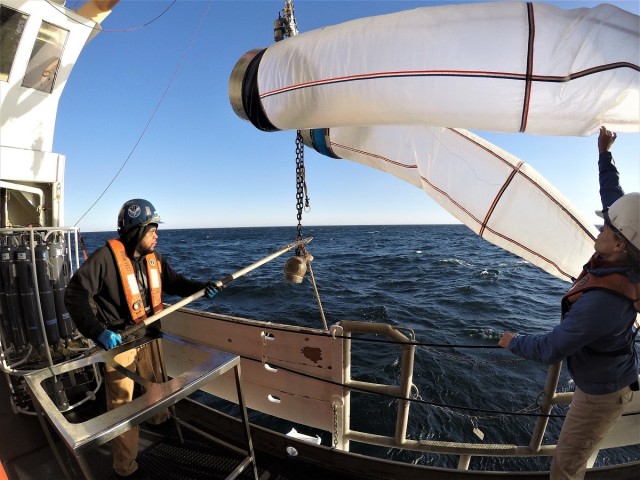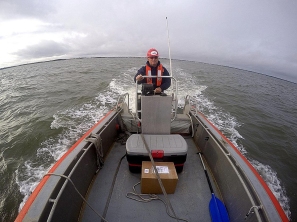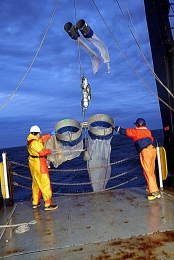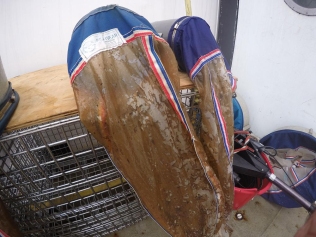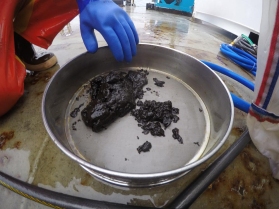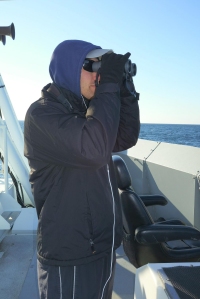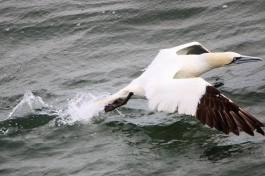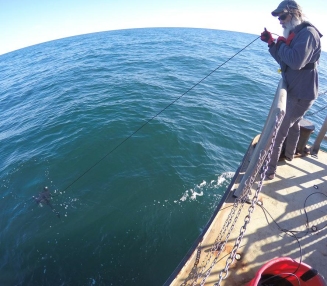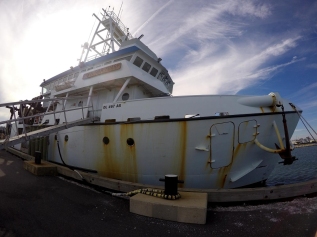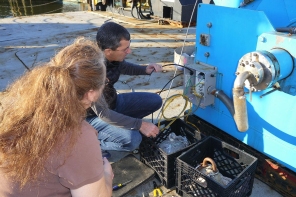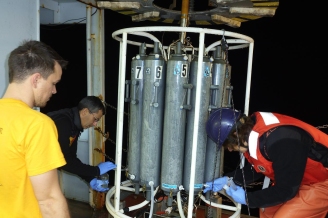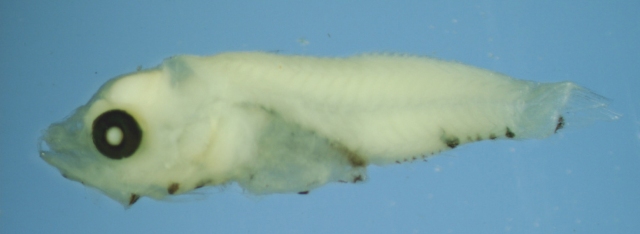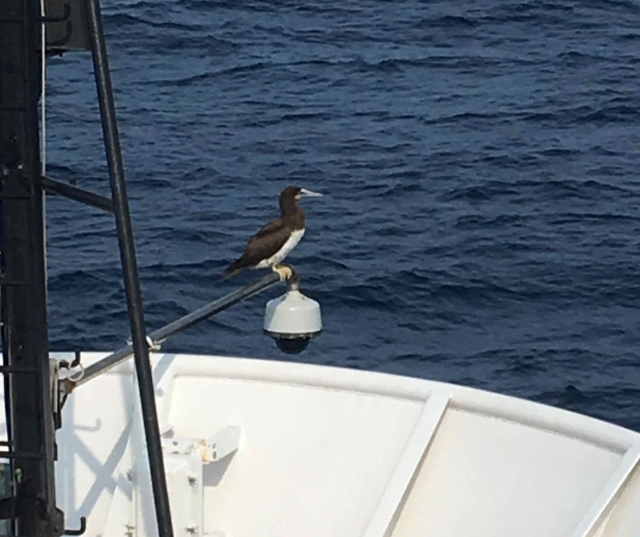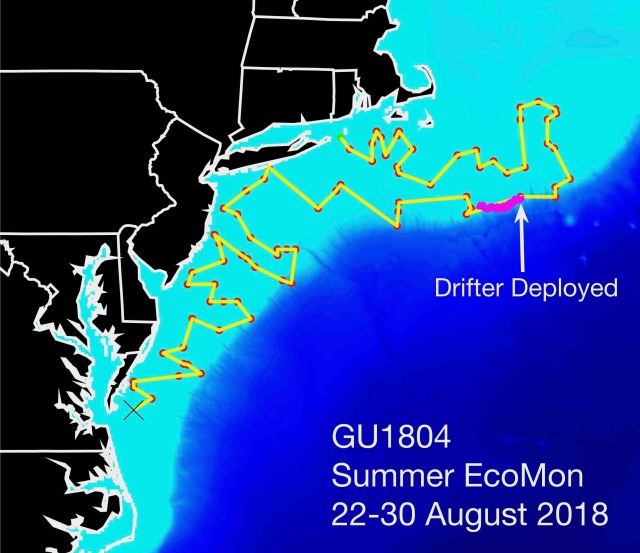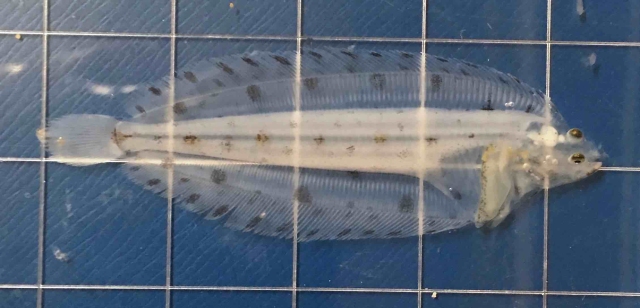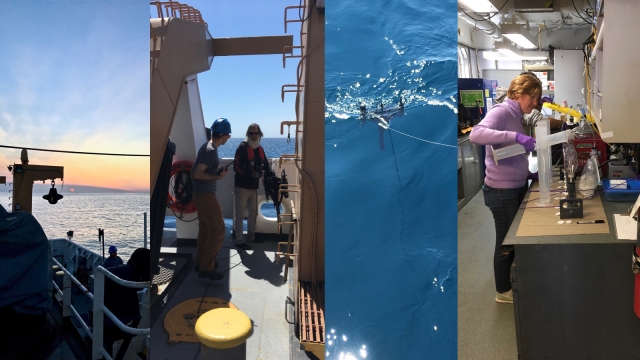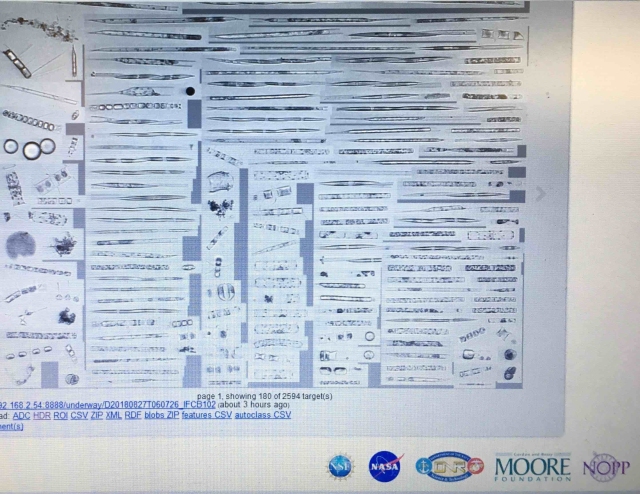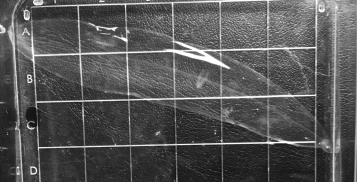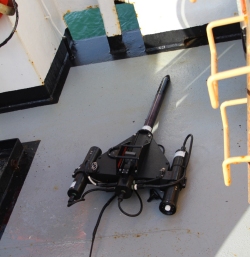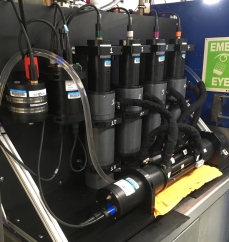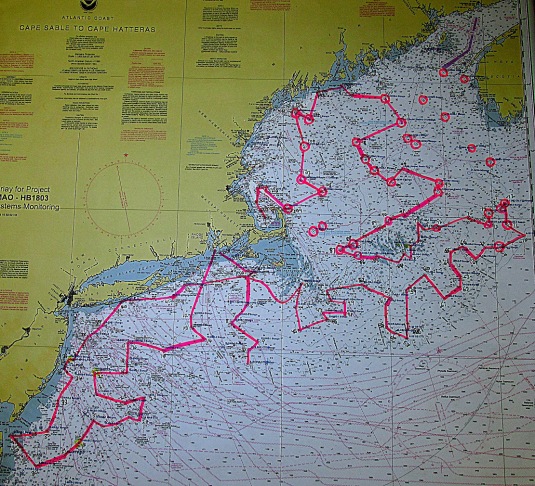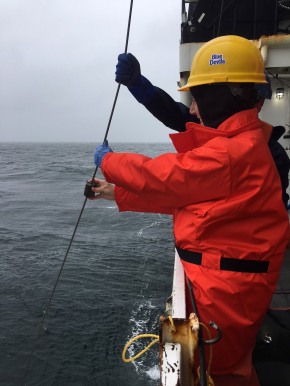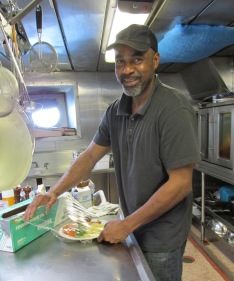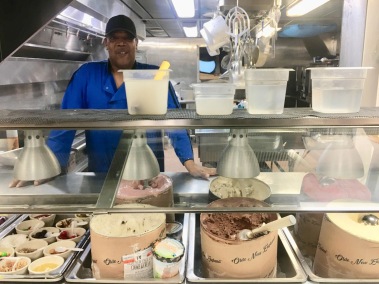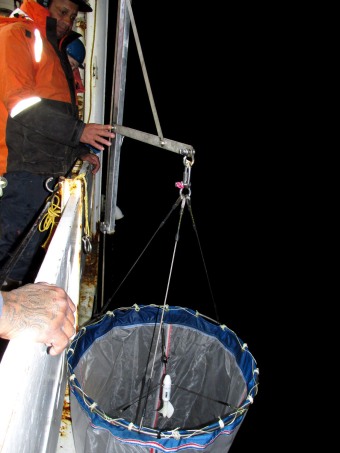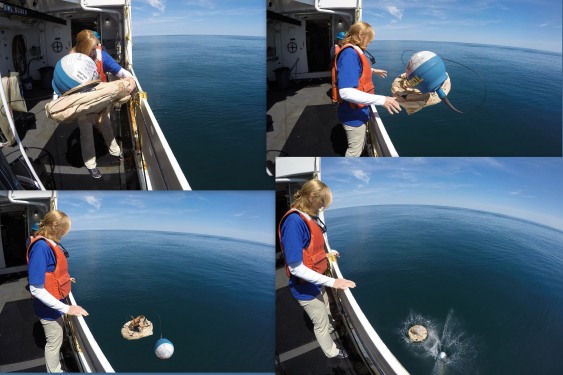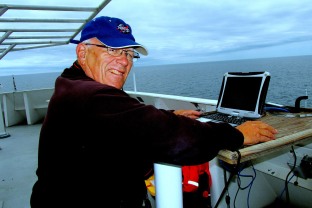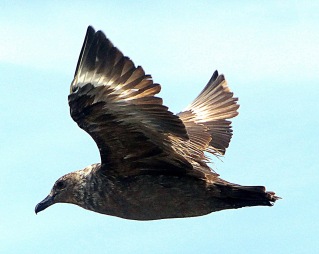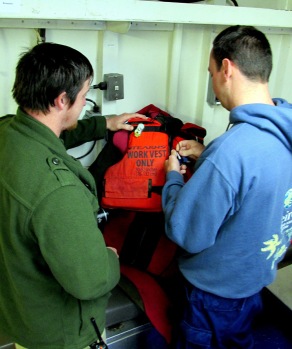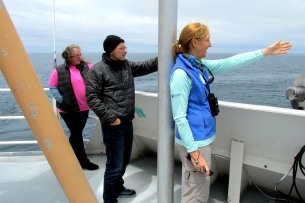June 4, 2019
The oft quoted line “May the force be with you” should be paraphrased as “May the weather be with you” for our now almost completed spring Ecosystems Monitoring Survey! We have been blessed by calm seas and light winds for almost every day of this trip, and as a result have now completed sampling coverage on all of Georges Bank and nearly every station in the expansive Gulf of Maine area as well.
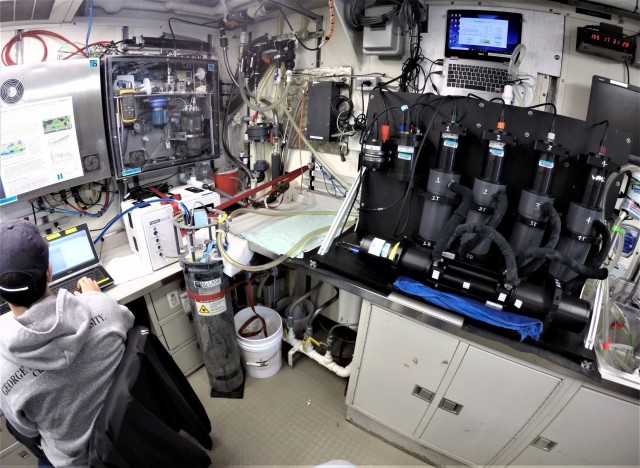
The scientific seawater analysis system on this cruise includes sensors to measure carbon dioxide (NOAA), total alkalinity (UNH), optical properties (URI), and record imagery of phytoplankton (WHOI). All this data is gathered from surface water pumped in along the entire cruise track. Photo credit: NOAA Fisheries/Jerry Prezioso
As mentioned in previous updates, the Ecosystem Monitoring Surveys attempt to serve as a vehicle for collecting data on many different fronts, from plankton to hydrography to seabirds and marine mammals, ocean water chemistry and optical properties, educational outreach and testing the efficacy of collecting gear.
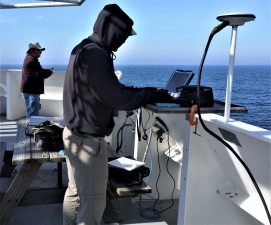
Above: Observers John Loch and Nick Metheny spent hours everyday on the flying bridge of the Henry B. Bigelow. Their observations of seabirds and marine mammals were interrupted only by fog banks, not bad weather! Right: Bigelow crew members Aaron Walton and Stephen Crawford deploy a ring net plankton sampler. Photo credits: NOAA Fisheries/Jerry Prezioso
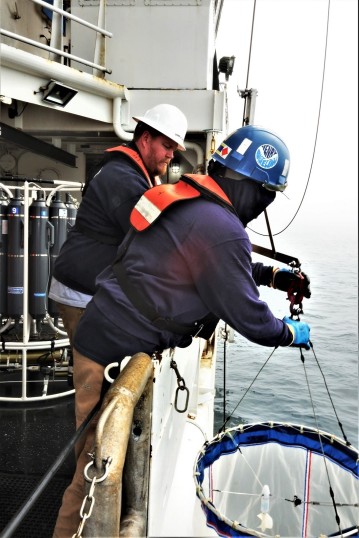
This cruise, aided by good weather and a unique combination of scientific staff and equipment, has succeeded on all these fronts, and will return home with loads of data and samples collected during our sixteen days at sea.
However, behind the scenes there is another component to the scientific achievements of this cruise: the often unheralded support provided by the vessel and its crew. Working together, the NOAA officers, engineers, deck crew, survey and electronics specialists all collaborate to make the Henry B. Bigelow the best platform possible for achieving its scientific mission. Without them the scientists couldn’t accomplish their around the clock, 24/7 routine of data collection in the relative comfort of what can often be a very inhospitable environment; the open ocean.
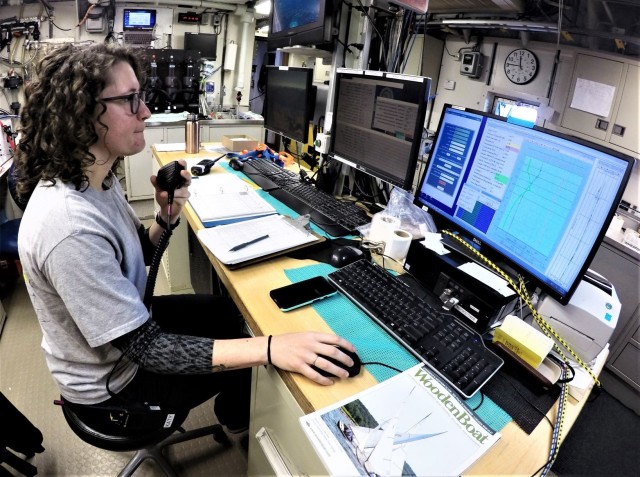
Survey tech Danielle Power monitors output from sensors during a CTD Niskin bottle water cast. Photo credit: NOAA Fisheries/Jerry Prezioso
Even spending Memorial Day weekend aboard on this cruise away from family and friends was made less of a burden by the efforts of the stewards to create a sense of community with their chili nacho nights, ice cream socials on Sundays and smoked beef brisket and pulled pork dinners made with their own on-board smoker!
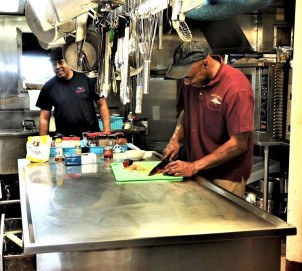
Stewards Dennis Carey and Raymond Burgess in the galley of the Henry B. Bigelow preparing one of their many excellent meals! Photo credit: NOAA Fisheries/Jerry Prezioso
Together with the rest of the scientific staff I’d like to thank everyone aboard the Henry B. Bigelow for enabling us to come home not just with a lot of data and samples, but also some fond memories and experiences from our time at sea. Thank you all very much!
Jerry Prezioso
Chief Scientist
HB1902 Spring Ecosystem Monitoring Survey

